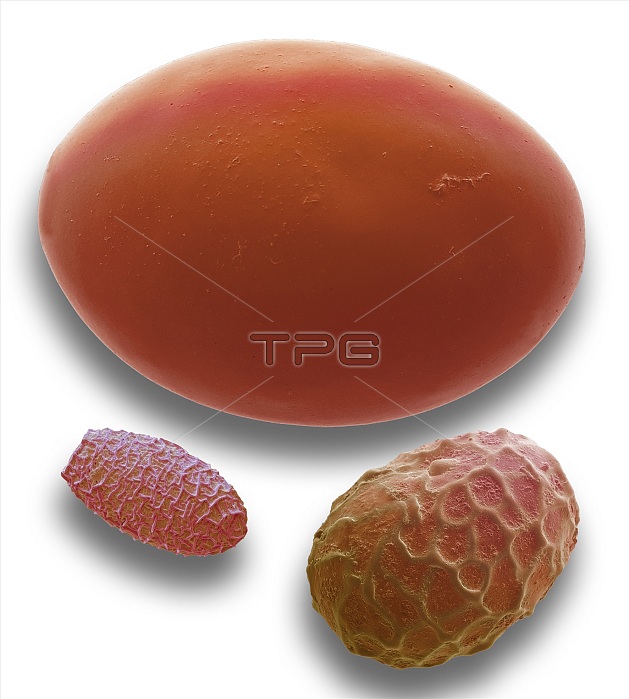
Eggs of a tapeworm, fluke and nematode. Coloured scanning electron micrograph (SEM) of common parasite eggs. Tapeworm eggs (largest) are released into the intestines, expelled with the faeces and then ingested by an intermediate host. They travel to the organs and form a hydatid cyst, which if ingested by the definitive host, forms a new tapeworm. The nematode egg (medium size) has a thick sculptured protective case. These thick-shelled eggs can survive unfavourable conditions of drought, buried in the soil.The female worm lays large numbers of eggs in the human intestine which are excreted in the faeces and ingested by a new host.The eggs of the Liver Fluke are secreted into the bile duct of the host animal, where they pass through the gut to be excreted into the outside environment. Magnification: x300 when printed 10 centimetres wide
| px | px | dpi | = | cm | x | cm | = | MB |
Details
Creative#:
TOP19626084
Source:
達志影像
Authorization Type:
RM
Release Information:
須由TPG 完整授權
Model Release:
N/A
Property Release:
N/A
Right to Privacy:
No
Same folder images:

 Loading
Loading